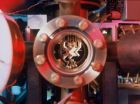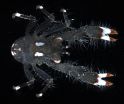(Press-News.org) The Achilles heel of the body – getting over damage to tendons can be a long and painful process. By combining the nuclear tests of the 1950s with tissue samples and modern technology, a research collaboration between the Aarhus University and University of Copenhagen now reveals why the healing process is so slow.
Many people are affected by injuries caused by straining the Achilles tendon and other tendons in the body. Danish athletes alone account for up to 200,000 injuries per year. This often leads to frustration over the poor treatment options available, and it can take several years to get over tendon damage. The long healing process has always been something of a mystery to medical science because the body's regeneration normally manages to remedy most injuries to human tissue.
Research results now surprisingly show that the Achilles tendon remains the same throughout adult life. This new knowledge partly reveals why healing following an injury can be a long and painful process, and it opens up for possibilities for seeking new forms of treatment.
"It's fascinating that some parts of the body are designed to last an entire lifetime. The Achilles tendon can withstand very strong forces – up to 500 kg when you're hopping, for example – and you might think that it would be exposed to minor injuries all the time, thus requiring constant repair and renewal. Not the Achilles tendon, however. Its construction is very strong – almost like a steel cable that has to last your whole life. Unfortunately, this 'tendon construction' does not last in a considerable number of cases, as can be testified by Denmark's numerous patients with strained tendons. With our new discovery, we can explain why the healing process can be difficult and take such a long time," explains Katja Heinemeier, Faculty of Health and Medical Sciences, University of Copenhagen.
Inheritance from the Cold War
To find out how quickly the Achilles tendon can regenerate, the research group used a somewhat unusual combination of competences – and adopted a positive approach to the many nuclear tests carried out during the Cold War. These nuclear tests took place during the period 1955, and led to a very strong increase in the amount of radioactive carbon-14 in the atmosphere. This increase – called the bomb pulse – reached its peak in 1963, when the amount of carbon-14 doubled compared with the natural level. Since then, it has gradually fallen to the present level, which is almost normal. However, Aarhus physicists can actively use the 'imprint' of the bomb pulse to study the carbon-14 content of materials. This has enabled the research group to find an entry point to what can be called the inheritance from the Cold War nuclear race.
"The changes in atmospheric carbon-14 can be constantly reflected in the human body because we eat plants – and animals fed with plants – that absorb carbon-14 from the atmosphere. In doing so, a kind of history is built up in our tissue. At a later stage, this can tell us about the environment we've lived in, at the same time as precisely showing how quickly the different types of tissue were regenerated. We've studied Achilles tendons from people who lived during the bomb pulse era, and we can conclude that their tendons have retained the very high levels of carbon-14 found during the bomb pulse and for decades afterwards. This can only be explained by the fact that very little renewal takes place in the building blocks of the tendons. Our studies show that the building blocks that made up your Achilles tendons when you were seventeen years old are virtually the same when you're fifty," explains Associate Professor Jan Heinemeier. In addition to being director of the AMS 14C Dating Centre at Aarhus University, he is Katja Heinemeier's father.
Possibility for new forms of treatment
When a tissue has limited renewal of its building blocks – also called slow turnover – it means a poorer healing process in general. Very limited tendon renewal thus provides a good explanation of why tendon injuries are difficult to treat and can often persist for years.
"Based on our results, we actually think that the cells living in the tendon are in a kind of hibernation state, and therefore don't manage to wake up and repair the tendon when it's injured. The interesting results achieved by our research collaboration cutting across different fields of study now form a much better understanding of tendon function. And now that we've found an explanation of why tendons heal so badly, we've got a better chance of developing new ways of treating tendon injuries. A new treatment strategy could involve trying to provoke the dormant tendon cells to wake up and start repairing the tendon, for example. We're about to initiate a study of this possibility," says Professor Michael Kjær, who is head of the Department of Sports Medicine, Bispebjerg Hospital, and is affiliated with the Centre for Healthy Aging, University of Copenhagen.
INFORMATION:
Fact box: Your body is constantly renewing itself
The thigh muscle you have today is not made of the same material it was two years ago. The shape and structure are largely the same, but you are getting new muscle tissue all the time at a microscopic level. This constant renewal takes place because the body's building blocks wear out over time, and the body therefore replaces them with new ones to maintain the function of the different parts of the body. There are actually only a few types of tissue in the body – such as teeth and the lens in the eye – that are built to last an entire lifetime.
This is the mechanism that the researchers behind the new discovery used in their work, because a tissue that is not really renewed keeps hold of the carbon-14 atoms from the bomb pulse throughout its life. In contrast, a tissue that is quickly replaced – such as muscle tissue – is unable to 'remember' the bomb pulse because its building blocks have been renewed numerous times since the high level of carbon-14 at the time of the bomb pulse.
Fact box: About the group behind the discovery
The AMS 14C Dating Centre, Department of Physics and Astronomy, Aarhus University, is headed by Associate Professor Jan Heinemeier, who has many years of experience using accelerator mass spectrometry (AMS) to measure carbon-14 concentrations. The centre has previously shown that the lens in the eye is permanent, by means of the same method used to observe the low renewal rate of the Achilles tendon. Read more here.
Professor Michael Kjær is head of the group of researchers at the Institute of Sports Medicine Copenhagen (ISMC), the Department of Orthopaedic Surgery M81, Bispebjerg Hospital, and the Centre for Healthy Aging, Faculty of Health and Medical Sciences, University of Copenhagen. The group consists of a research department that mainly focuses on tendon tissue, and a sports clinic that treats patients with different sports injuries. Read more here.
The project receives financial support from the Danish Council for Independent Research | Medical Sciences (FSS) and the Danish Rheumatism Association. Senior Scientist Katja Heinemeier was the main applicant.
For more information, please contact
Senior Researcher Katja Heinemeier, University of Copenhagen
+45 2855 6602
katjaheinemeier@gmail.com
Associate Professor Jan Heinemeier, Aarhus University
+45 2338 2318
jh@phys.au.dk
Professor Michael Kjær, University of Copenhagen
+45 3531 6089
michaelkjaer@sund.ku.dk
This is why it takes so long to get over tendon injuries
The Achilles heel of the body
2013-02-15
ELSE PRESS RELEASES FROM THIS DATE:
Research uncovers a potential link between Parkinson's and visual problems
2013-02-15
The most common genetic cause of Parkinson's is not only responsible for the condition's distinctive movement problems but may also affect vision, according to new research by scientists at the University of York.
Parkinson's, the second most common form of neurodegenerative disease, principally affects people aged over 60. Its most common symptom is tremor and slowness of movement (bradykinesia) but some people with Parkinson's also experience changes in vision.
Now for the first time, researchers in the University's Department of Biology have established a link between ...
Playing quantum tricks with measurements
2013-02-15
This press release is available in German.
A team of physicists at the University of Innsbruck, Austria, performed an experiment that seems to contradict the foundations of quantum theory -- at first glance. The team led by Rainer Blatt reversed a quantum measurement in a prototype quantum information processor. The experiment is enabled by a technique that has been developed for quantum error correction in a future quantum computer.
Measurements on quantum systems have puzzled generations of physicists due to their counterintuitive properties. One of them is the fact ...
Can hospital readmission rates be trusted?
2013-02-15
MAYWOOD, Il. - When hospital patients have to be readmitted soon after discharge, hospitals look bad.
A high readmission rate also can result in reduced Medicare reimbursements. But a study of spine surgery patients has found that the standard method used to calculate readmission rates is a misleading indicator of hospital quality. Loyola University Medical Center neurosurgeon Beejal Amin, MD, and colleagues found that 25 percent of the readmissions of spine surgery patients were not due to true quality-of-care issues.
Results are reported in a featured article in the ...
The same genetic defect causes Pompe disease in both humans and dogs
2013-02-15
Pompe disease, a severe glycogen storage disease appearing in Lapphunds is caused by a genetic defect in acid α-glucosidase gene. The same genetic mutation also causes the equivalent disease in humans. Based on this finding, canine Pompe disease can now be diagnosed with a genetic test.
This research was completed at the Canine Genetics Research Group lead by professor Hannes Lohi in the University of Helsinki and Folkhälsan Research Center in Finland and will be published in PLOS ONE on February 14, 2013.
Human Pompe disease is caused by complete or partial deficiency ...
The discovery of a new genus of crustacean and 5 new species
2013-02-15
Experts from the Centre for Advanced Studies of Blanes and the University of Barcelona (UB) collected and studied different crustacean specimens during recent expeditions to Madagascar, New Caledonia, Vanuatu, the Philippines and French Polynesia.
Using morphological and molecular data they have discovered five new species of crustaceans in the waters of these regions. They are genetically different but morphologically very similar and they also found a new genus, named Triodonthea. The five new species documented in the study belong to the Lauriea genus of the Galatheidae ...
Force is the key to granular state-shifting
2013-02-15
Ever wonder why sand can both run through an hourglass like a liquid and be solid enough to support buildings? It's because granular materials – like sand or dirt – can change their behavior, or state. Researchers from North Carolina State University have found that the forces individual grains exert on one another are what most affect that transition.
Physicists have explored the changing behavior of granular materials by comparing it to what happens in thermodynamic systems. In a thermodynamic system, you can change the state of a material – like water – from a liquid ...
Chemists develop single molecule sieves to separate complex molecular mixtures
2013-02-15
Chemists at the University of Liverpool have created a new technique that could be used in industry to separate complex organic chemical mixtures.
Chemical feedstocks containing benzene are used extensively in industry to create modern materials and polymers. Their use relies heavily on distillation techniques which separate complex mixtures into more simple molecules used as building blocks to develop drugs, plastics and new materials. These distillation techniques can be expensive and involve large amounts of energy for hard-to-separate mixtures.
A team of researchers ...
Rutgers physicists test highly flexible organic semiconductors
2013-02-15
Organic semiconductors hold promise for making low-cost flexible electronics – conceivably video displays that bend like book pages or roll and unroll like posters, or wearable circuitry sewn into uniforms or athletic wear. Researchers have demonstrated the ability to "print" transistors made of organic crystals on flexible plastic sheets, using technology that resembles inkjet or gravure printing.
However, for the technology's potential to be realized, scientists have to show that these organic semiconductors will withstand the rugged handling they invite – they will ...
Extreme winters impact fish negatively
2013-02-15
Wcologists from Umeå University and the Norwegian University of Science and Technology in Trondheim have studied fish communities and fish habitat and reviewed the importance of winter conditions for fish in streams and rivers in cold regions. The findings are now being published in the journal BioScience.
It is well known that winter can be a stressful season for plants and animals in streams and rivers. It is reasonable to assume that more extreme weather conditions are the most taxing, but the ecological significance of this is poorly understood.
The research team, ...
UC research takes a new approach to identifying 'food deserts'
2013-02-15
University of Cincinnati-led research takes a new direction in examining the availability of healthy foods for urban populations by examining the commuting patterns of its residents.
This new approach to identifying so-called food deserts, now published online, will appear in the May journal of Health and Place.
Neighborhoods without access to stores that provide healthy food options – such as fresh fruits and vegetables – are often labeled as food deserts. However, current methods for determining which neighborhoods have access to nutritious foods focus only on where ...
LAST 30 PRESS RELEASES:
James Webb telescope reveals spectacular atmospheric escape
ICE-CSIC leads a pioneering study on the feasibility of asteroid mining
Dramatic rise in young people using mental health services
Be careful trusting TikTok for gout advice
A study by the University of Seville links the vanishing of the specific heats at absolute zero with the principle of entropy increase
Anxiety and insomnia may lower natural killer cell count, potentially repressing immune function
How parasitic, asexual plants evolve and live
Research spotlight: A subset of patients with depression could benefit from anti-inflammatory treatment
New fully digital design paves the way for scalable probabilistic computing
Membrane electrode assembly design for high-efficiency anion exchange membrane water electrolysis
U.S. debt ceiling disputes show measurable impact on global crude oil markets
Climate extremes triggered rare coral disease and mass mortality on the Great Barrier Reef
Direct observation reveals “two-in-one” roles of plasma turbulence
Humans rank between meerkats and beavers in monogamy ‘league table’
US fossil reveals early mass-burial event and ancient microbial attack
Sedative choice could improve outcomes for breathing tube patients
New superconducting thin film for quantum computer chips
Simulations reveal protein "dynamin" constricts cell membranes by loosening its grip
Nearly 1 in 5 UK emergency department patients cared for in corridors/waiting rooms
Heavy energy drink intake may pose serious stroke risk, doctors warn
Violence against women and children among top health threats: New global study reveals disease burden far larger than previously estimated
Predicting who is at risk of developing type 1 diabetes, as new drugs now available
New gene-mapping method unlocks hidden drivers of cancer
Ocean current and seabed shape influence warm water circulation under ice shelves
Call to increase funding for ‘invisible’ Deaf victim-survivors of domestic abuse
University of Maryland School of Medicine names distinguished scientist and academic leader Gerald M. Wilson, PhD, as Chair of the Department of Biochemistry and Molecular Biology
Receptors in mammary glands make livestock and humans inviting hosts for avian flu
Icy hot plasmas
Treating adults with autism: Maryland Clinical Center offers national blueprint for care after pediatric transition
University of Phoenix College of Doctoral Studies releases white paper on reclaiming control to build workforce resilience
[Press-News.org] This is why it takes so long to get over tendon injuriesThe Achilles heel of the body




